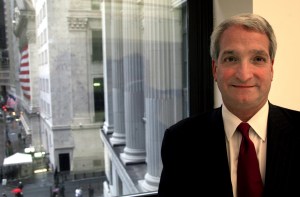
The Commercial Observer: What happened to the construction industry last year? It was pretty slow, right?
Mr. Sciame: Last year, the construction industry went from what was being referred to as ‘white hot’ to ‘falling off the cliff.’ The number of projects that were in the development phase had just evaporated. I don’t think there were any projects I could think of in the New York metropolitan area last year. So you had all the new construction drop off the cliff. Institutional was still fairly strong, but not like it was, in terms of what happened to endowments and things like that. I think it’s fair to say that the construction industry entered an extraordinary downturn in 2009.
Now we’re seeing, almost exclusively, publicly funded projects.
Yeah. I mean, you know, if you were a major construction firm in 2008 or 2009, you still had a backlog, and you had a pretty good year. But you saw your new projects start to get more challenging. We actually saw this coming, and diversified. We went into the public sector. We were doing a lot of museums, and they were highly successful; so what we wanted to do is get into a sector that we had been in years ago, in terms of institutional, where we knew there would be repeat work. We sort of diversified and went not only into the institutional realm but also the public sector-EDC, DDC, CUNY, and we’ve been successful in landing those new projects.
What are the drawbacks, or benefits, of working on a publicly funded project?
They’re not that dissimilar. The public sector understands that a construction management approach makes sense. So you’re able to qualify the subcontractors and make sure that even under Wicks law you just have good contractors bidding on the project going through the pre-qualification process. We’re also finding that the city is really paying attention to architecture, which is great-because I’m a graduate architect. Never practiced, but my love is for great architecture. I think it’s been said that civilizations are judged in large part by the buildings they leave behind, and it’s terrific this city is looking at the buildings they leave behind.
In your bio, you’re described as ‘a builder with the eye of a constructor but the vision of an architect.’ What does that mean?
I like great architecture. I also think great architecture adds value to the development project. When an architect is hired by the owner, I believe they’re hired in large part for the type of work they’re going to deliver. We try to do our very best to have that architect deliver that vision in a cost-effective manner. So we look at the architecture and try to envision how we can build this cost effectively. How can we achieve that design for the right price? If you do that, you have a happy client.



